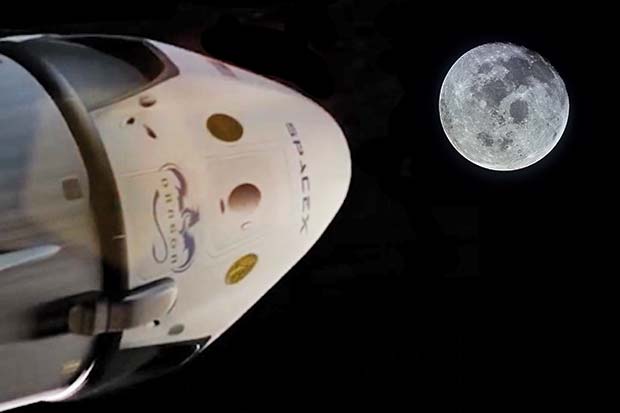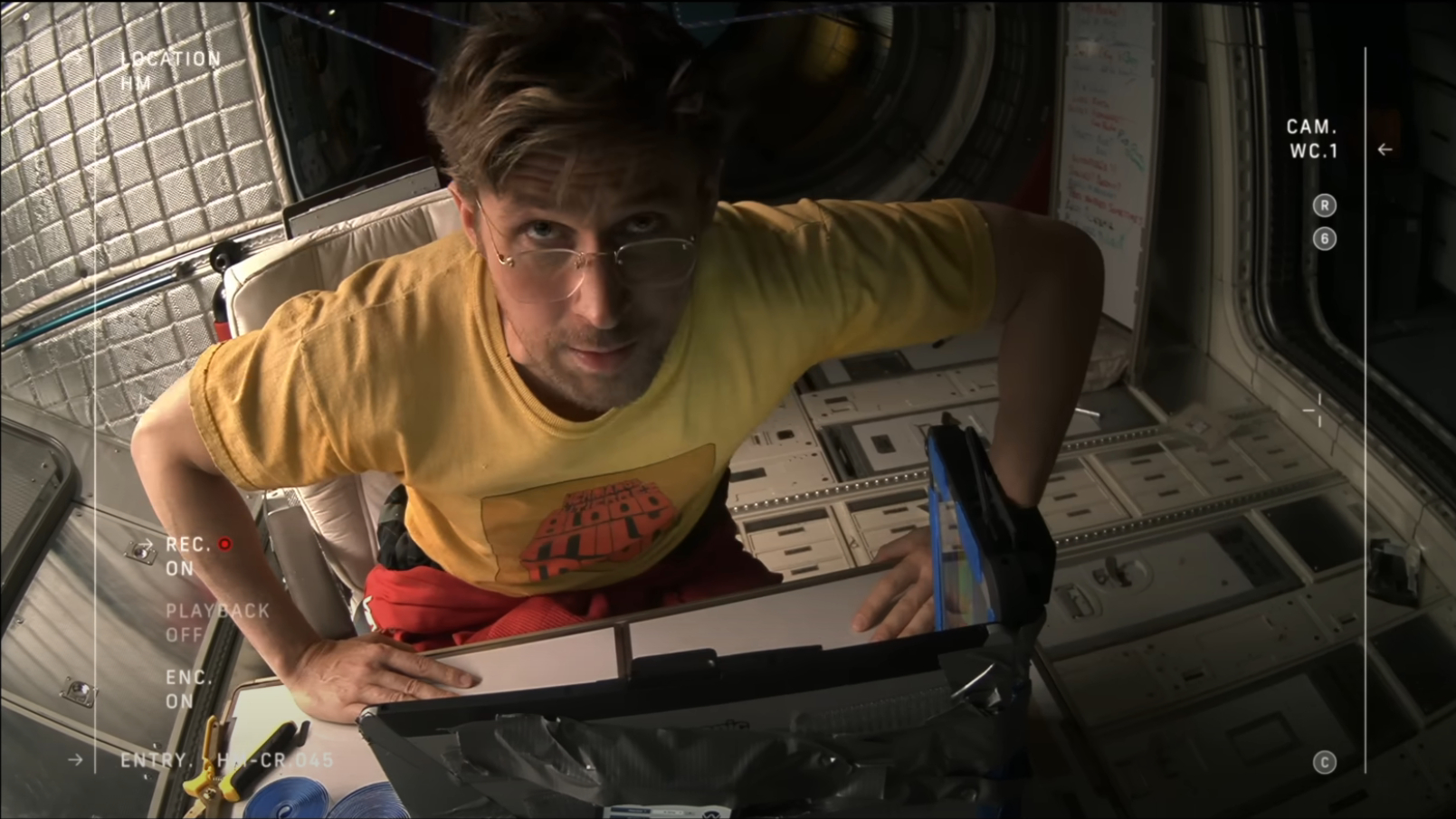Could SpaceX Really Launch People Around the Moon Next Year?

A lot will have to go right for SpaceX to meet its ambitious moon-mission timetable, experts say.
On Monday (Feb. 27), SpaceX founder and CEO Elon Musk announced that the company plans to launch two paying customers on a weeklong trip around the moon before the end of 2018.
Astronauts first saw the moon's far side way back in 1968, but the antiquity of that achievement shouldn't fool anyone into thinking that SpaceX's proposed mission will be easy, said Wayne Hale, a former manager of NASA's space shuttle program. [SpaceX to the Moon - 2018 a Lofty Goal? (Video)]
"Even with today's technology, it's still an extraordinarily difficult, extraordinarily dangerous task to undertake, period — I don't care who you are," said Hale, who retired from NASA in 2010 and now serves as director of human spaceflight at the Colorado-based engineering company Special Aerospace Services.

SpaceX could pull off a crewed lunar loop eventually, Hale said, but he's skeptical that the mission will happen next year.
"I think their schedule is so aggressive as to not be believable," he told Space.com.
"I wish them the best of luck, and I certainly hope they succeed," Hale added. "But as a taxpayer, I'm glad there's no tax money involved in this."
Breaking space news, the latest updates on rocket launches, skywatching events and more!
SpaceX will use its Dragon V2 crew capsule and Falcon Heavy rocket on the lunar mission. But the Falcon Heavy has not launched yet — its maiden flight is currently scheduled to take place sometime this summer — and Dragon V2 is still in development as well. Indeed, SpaceX has not launched a crewed mission of any kind to date, Hale pointed out.
SpaceX is getting Dragon V2 ready to carry astronauts to and from the International Space Station (ISS), under a multibillion-dollar contract with NASA. The first crewed ISS flight will come in mid-2018 if current schedules hold, Musk said Monday during a teleconference with reporters. (These ISS missions will employ SpaceX's Falcon 9 rocket, not the Falcon Heavy.)
"I would feel much more positive about their program if they had already demonstrated human spaceflight on their Dragon V2 capsule, and if they had already received approval from NASA, according to the safety standards that NASA has set out for the transportation of American astronauts to the International Space Station," Hale said. "But they've done neither of those things to date."
The baseline ISS-bound Dragon V2 will also have to be modified for a lunar mission, Hale said. A capsule that flies around the moon will need a more robust communications system and a more capable heat shield than a craft that just goes to low Earth orbit and back, he noted. (During Monday's teleconference, Musk said that communications modifications will indeed be necessary for the lunar fly-around, but he added that the baseline Dragon V2's heat shield is "quite massively overdesigned" and can handle the higher-velocity re-entry of a moon mission.) [SpaceX's Crew Dragon Spacecraft in Pictures]
Getting Dragon V2 and the Falcon Heavy up and running in time for a 2018 lunar-mission liftoff will indeed be challenging, said Phil Larson, a former space policy adviser to President Barack Obama who went to work for SpaceX and is now at the University of Colorado Boulder's engineering school. But "challenging" is a far cry from "impossible," he stressed.
"I think Elon has confirmed before that he doesn't put out dates that aren't technically feasible," Larson told Space.com.
And a slight delay wouldn't exactly be the end of the world, he added.
"Even if the 2018 mission goal results in a 2019 mission, it would still be historic," Larson said. "It's not like a couple months' difference would change the magnitude of this mission that much."
Musk tends to set ambitious timelines, Larson added. SpaceX doesn't always hit those timelines, but the company has a track record of accomplishing things that have never been done before. In 2010, for example, SpaceX became the first private entity to launch a spacecraft (a robotic Dragon cargo capsule) to Earth orbit and bring it back to the ground in one piece. (The company has since done this many times with the cargo Dragon, which regularly visits the ISS on uncrewed resupply runs for NASA.)
And SpaceX has landed the first stage of the two-stage Falcon 9 eight separate times during orbital missions, as part of the company's quest to develop reusable rockets. Nobody else has done this even once. (Blue Origin, the company run by Amazon.com CEO Jeff Bezos, has pulled off five rocket landings, but all of those occurred during suborbital test flights.)
Fully and rapidly reusable rockets are a key part of SpaceX's vision for colonizing Mars — Musk's grandest ambition, and his stated reason for founding SpaceX back in 2002. And the lunar fly-around mission could be a step along that path, giving the company important experience in deep space, Larson said.
"For a company that's looking to help lead the way to the Red Planet, this is a totally logical technical step to take," he said.
Follow Mike Wall on Twitter @michaeldwall and Google+. Follow us @Spacedotcom, Facebook or Google+. Originally published on Space.com.
Join our Space Forums to keep talking space on the latest missions, night sky and more! And if you have a news tip, correction or comment, let us know at: community@space.com.

Michael Wall is a Senior Space Writer with Space.com and joined the team in 2010. He primarily covers exoplanets, spaceflight and military space, but has been known to dabble in the space art beat. His book about the search for alien life, "Out There," was published on Nov. 13, 2018. Before becoming a science writer, Michael worked as a herpetologist and wildlife biologist. He has a Ph.D. in evolutionary biology from the University of Sydney, Australia, a bachelor's degree from the University of Arizona, and a graduate certificate in science writing from the University of California, Santa Cruz. To find out what his latest project is, you can follow Michael on Twitter.
